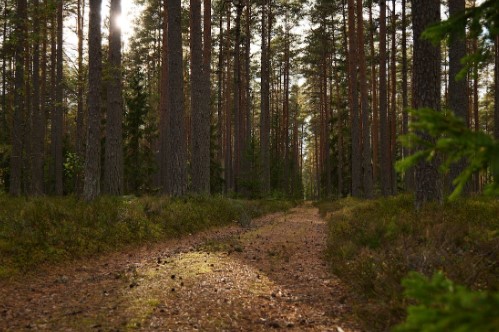The ancient plants known as Giant Groundsels (Dendrosenecio kilimanjari) are located atop Mount Kilimanjaro in Tanzania. They arose at altitudes above 14,000 feet around a million years ago, where they acquired the capacity to withstand extremely low temperatures. It was formerly known as Senecio kilimanjari; however, a recent reclassification in the Asteraceae family caused some species that were formerly in Senecio to be split off, placing it and several other species in the new genus Dendrosenecio.
The majority of these plants are between 2-3 meters high, yet they grow at an extremely sluggish pace—just 3-5 cm every year—due to the severe mountain circumstances and frigid weather. However, some plants can reach up to 30 to 32 feet (10 meters) in height. The amazing and bizarre giant groundsels, which belong to the dandelion family but resemble a cross between a pineapple and a cactus,. It was thought that dinosaurs had consumed these plans. Evolution gave the groundsels the ability to survive in the extreme conditions found between 2,800 and 4,000 meters above sea level, which says something about how well they adapted to that habitat.
Giant groundsels are sturdy assemblies of trunks and branches, often resembling small trees in stature. As these plants age, they develop a large spherical mass of tightly packed, robust leaves at the top, which serves to protect the center from the chilly nights at the altitude. Dendrosenecio kilimanjari is suited for environments with appropriate rainfall. Dendrosenecio’s capacity to hold onto water helps them to stay moist even in extremely dry conditions, which permits them to continue growing slowly and steadily.
It is amazing how they have evolved to their surroundings over millions of years, and you will wonder how they manage to survive in such tough conditions. The plant keeps its large, dead leaves, which close when it gets too cold, to help insulate the stem. The plants have evolved water storage in the pith of the stem, nyctinastic leaf movement (which means the leaves close when the temperature drops too much), a natural “anti-freeze,” and self-insulation through withered and dead foliage (part of the reason the groundsels look so strange) to survive in such a harsh environment.
High up the mountain, temperatures regularly drop below freezing overnight. The light grayish-green lichens that grow on Dendrosenecio as a natural marker of the mountain’s fresh air are a testament to the pristine alpine environment of Mount Kilimanjaro. These lichens live only in clean, pollution-free conditions at high elevations, and their presence on Dendrosenecio makes them almost permanent fixtures on the plant. They hand in clumps resembling white hair. Below 4,000 meters, where the moorland and lower alpine zones converge and where the environment is perfect for the huge groundsel, is where the Dendrosenecio Kilimanjari thrives.
Is this truly the way evolution operates—that is, how groundels learned to do this? Would it not be more accurate to state that those who possessed these traits naturally selected for them because they survived? The key to understanding giant groundsels, both on Kili and in other East African mountains, is evolution. Although the species differ slightly, it is thought that they all descended from a common groundsel some a million years ago and ascended the slopes at an increasing rate through the gradual process of windborne seed distribution (which would only move the plants a few meters at a time).
An endemic to Mount Kilimanjaro, these plants are unique to Earth and are considered a semi-official emblem of Kilimanjaro, appearing in many trekkers’ images. But these plants are real marvels of nature that will blow your mind for a few minutes and show how it would emerge in great shape. It is surprising to learn that the giant groundsel and the common groundsel are closely related. The giant groundsel is a widely distributed plant that can be found throughout East Africa and beyond. It is hard to imagine that its massive size is related to a much smaller plant that is a common sight in fields and gardens all over the world.
Read More: Ginkgo biloba – Traditional Medicine Tree










